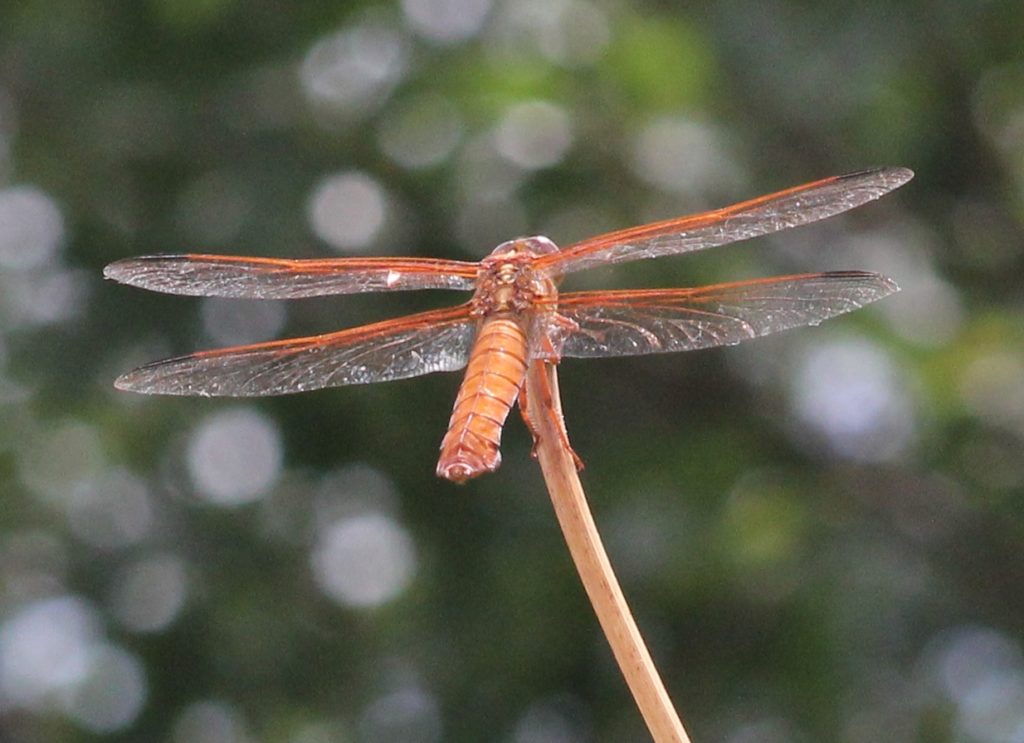I was idly thinking, as I listened to the Cicadas singing this week, that it was time for some serious dragon action. This is the time of year when the Dragonflies and Damselflies really get going in our yard and at the farm. For a small suburban yard, it’s surprising how many large economy-sized Dragonflies make use of our tiny backyard pond and surroundings. They come each summer without fail–to hunt, and court, and breed. They are the jumbo jets of the Dragonfly world—dauntingly large flying fossils crafted in crimson, emerald, diamond, sapphire and jet. They are at once primitive and elegant, marvels of mechanical design and visual patterning.


The farm is a different story, where size isn’t what you notice. It’s a numbers game there, with unbelievable throngs of Dragonflies darting above the fields on a hot summer day. It’s not odd to see hundreds at a time out the back door of the barn. They come in a dazzling array of sizes and colors, and not knowing their names and their stories makes me a little sad. Each year I think it will be the year that I learn about Dragonflies and begin to understand their stories. Some actually migrate. Which ones? What do they do when they reach their destinations? Where do they even go? All these things interest me, and I even have a book to help with the process of learning, but it has sat largely untouched for a few years. Summer saps my desire to do hard things.


Perhaps this year, I will actually do the work needed to learn what I want to know. I’ll need to record the ones I can, match their physical descriptions to the known species from our area, and ask for help when I can’t puzzle it out on my own.


While I’m recording each species, I might as well make a list of species for the farm—like our bird list and our butterfly list. I should also submit sightings to a citizen science project like iNaturalist so that my observations of these species don’t go unused and wasted. It’s surprising how much citizen science contributions have impacted biological science in the past few years. It makes sense. Nobody can pay enough grad students to collect data in real time across the continent in many locations at once. By harnessing the power of many semi-trained pairs of volunteer eyes, so much more data can be collected about species distributions than ever before.


My fear is that we are just in time with this distributed information technology to all witness our smaller species winking out and becoming extinct as we watch. In a way, it’s good that people other than trained biologists can now keep any eye on the fate of a particularly charming Bumblebee or Ladybeetle. When teachers, housewives, waiters, barbers, engineers, teenagers, grocery clerks and car salesmen can all see what’s happening by simply typing in a few keywords, when they collect sightings like Pokemon cards, they’ll become invested in the welfare of those species, and maybe we can change our habits as a nation and stop the slide of species into oblivion.


We can only care about the things we know about, and we protect only what we care about. We’ve been gifted with an incredible diversity of life all around us. It would be a shame to fail to appreciate and care for the gift.
The Dragonflies featured in today’s blog were all photographed over a three day period, not even trying very hard. By the end of the summer, I hope to know something more about each of them and their relatives. If you know me at all by now, you know I’ll try to share what I learn. Expect a horde of Dragonflies.
